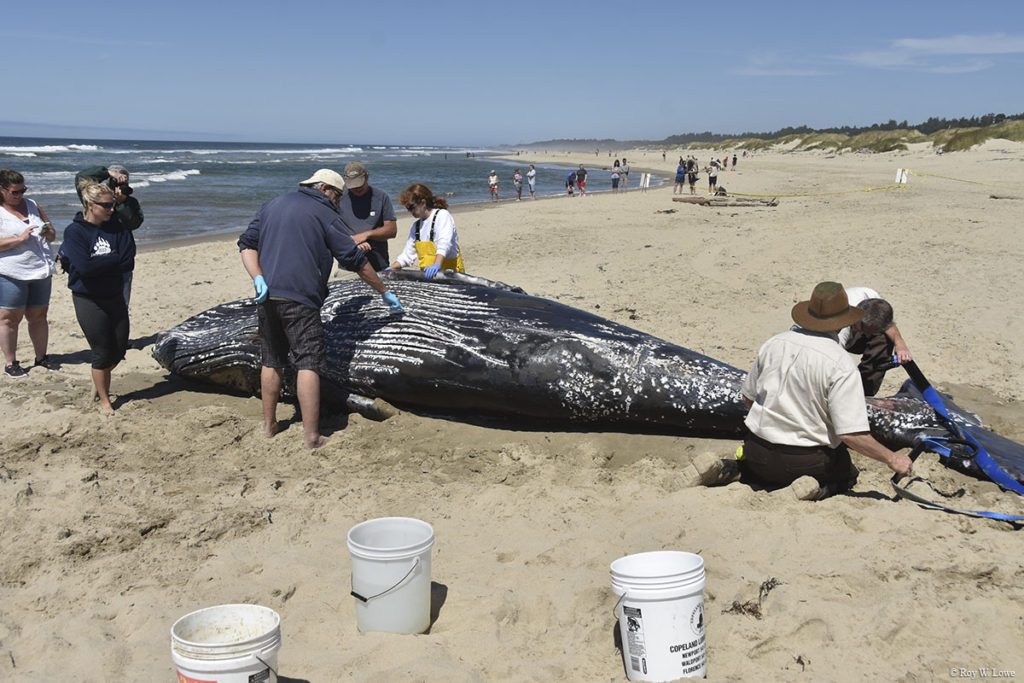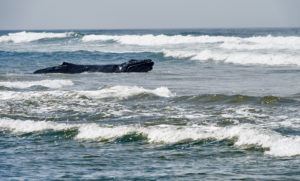
A young humpback whale euthanized last week near Waldport after stranding itself on the beach for more than a day was a healthy male with no apparent injuries or wounds, according to preliminary necropsy results.
The whale’s layer of blubber was good condition, said Michael Milstein, the Portland-based spokesman for the National Oceanic and Atmospheric Administration.
Live whale strandings are rare – only about eight each year on all United States coasts, according to NOAA. Most die within 24 hours even if they are able to get to deeper water.
Only an average of two a year are euthanized, according to NOAA’s Marine Mammal Health and Stranding Response Program.
In 2016 and 2017, according to NOAA, there were just four live strandings in the Pacific Northwest; all four died.
Milstein said veterinarians who conducted a necropsy after the whale was euthanized Thursday, Aug. 15 found no wounds or injuries but noted some healed scratches and scars, which is common.
Veterinarians drew blood samples while it was alive, which will be processed and examined for other health indicators, Milstein said.
The 5- to 6-month-old 21-foot-long humpback appeared to be weaned from its mother and likely in search of prey when it got stuck in the sand near the Bayshore community about 7 a.m. Wednesday. It got free from the sand during a high tide Wednesday afternoon, swam out for a bit and then turned toward shore again.

It failed to get off the beach during a high tide about 1 a.m. Thursday, rolling farther up the beach to the high-tide line.
About noon Thursday veterinarians and whale experts made the decision to euthanize it, determining that its condition had deteriorated too much after almost 30 hours on the beach.
Milstein said the whale’s stomach had a large amount of fluid that was probably the result of the whale swallowing a lot of seawater while it was stranded and during higher tides. It was unclear if there was milk present because of all the water, he said.
While scientists and dozens of volunteers who tried to keep the whale cool hoped it could get off the beach, most said its chances of survival were slim.
Whale populations along the West Coast have recovered well in the past 30-40 years. Gray whales are most commonly seen off the Oregon coast, migrating north to Alaska waters or south to breed off the coast of Mexico.
The Mexico population of humpback whales, which travel north to forage off the California, Oregon and Washington coasts, is estimated to be 6,000 to 7,000 animals. There are an estimated 22,000 humpbacks total in the North Pacific, including whales from Hawaii, Mexico and Central America.



